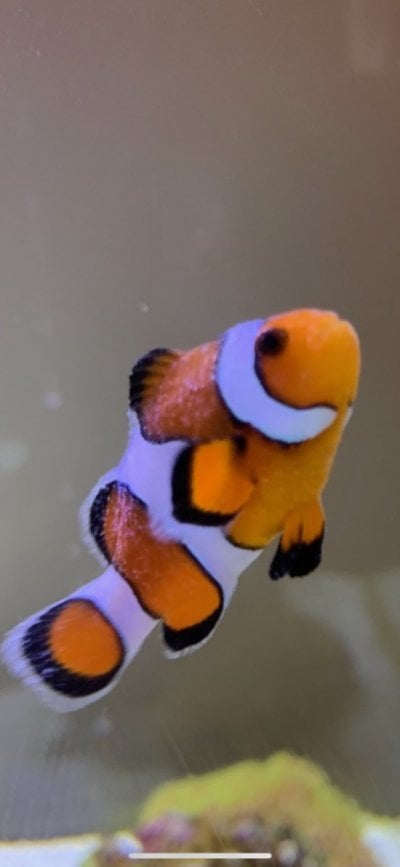I've just noticed these white specs on my Clown (pictured below). She is acting perfectly normal from what I can tell--eating normally and swimming around fine. From some precursory research I think that this may be either Marine ICH, Brooklynella, or Velvet.
Any help diagnosing as well as treatment (hopefully, if any) would be hugely appreciated as I am still new to marine tanks.
Thanks in advance!
Any help diagnosing as well as treatment (hopefully, if any) would be hugely appreciated as I am still new to marine tanks.
Thanks in advance!

















